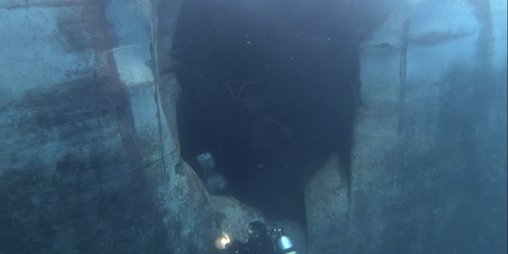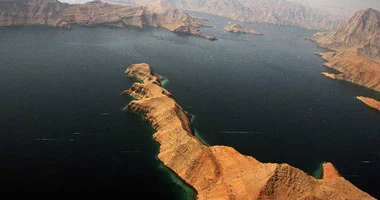
DUBAI, United Arab Emirates (AP) — Two oil tankers in the Gulf of Oman, near the strategic Strait of Hormuz, were reportedly attacked on Thursday, the U.S. Navy said, with one adrift and on fire amid heightened tensions between Washington and Tehran and a high-stakes visit by the Japanese prime minister to Iran.
Benchmark Brent crude spiked 4% in trading following the reported attack, to over $62 a barrel, according to early market figures Thursday.
The latest incident comes after the U.S. alleged that Iran used mines to attack four oil tankers off the nearby Emirati port of Fujairah last month. Iran has denied being involved, but it comes as Iranian-backed rebels in Yemen also have launched missile and drone attacks on Saudi Arabia.
Cmdr. Joshua Frey, a 5th Fleet spokesman, said the U.S. Navy was assisting the two vessels. He did not say how the ships were attacked or who was suspected of being behind the assault.
Dryad Global, a maritime intelligence firm, preliminarily identified one of the vessels involved as the MT Front Altair, a Marshall Islands-flagged crude oil tanker. The vessel was “on fire and adrift,” Dryad added. It did not offer a cause for the incident or mention the second ship.
Iranian state television’s website, citing the pro-Iran Lebanese satellite news channel Al-Mayadeen, said two oil tankers had been targeted in the Gulf of Oman. It offered no evidence to support the claim.
Officials in the United Arab Emirates declined to immediately comment. The United Kingdom Maritime Trade Operations, a maritime safety group run by the British navy, first put out the alert early Thursday, giving coordinates for the incident some 45 kilometers (25 miles) off the Iranian coastline.
The timing of Thursday’s reported attack was especially sensitive as Japanese Prime Minister Shinzo Abe was visiting Iran on a high-stakes diplomacy mission. On Wednesday, after talks with Iranian President Hassan Rouhani, Abe warned that any “accidental conflict” that could be sparked amid the heightened U.S.-Iran tensions must be avoided.
His message came just hours after Yemen’s Iranian-backed Houthi rebels attacked a Saudi airport, striking the arrivals hall before dawn and wounding 26 people Wednesday.
Abe met with Iran’s Supreme Leader Ayatollah Ali Khamenei on Thursday, the second and final day of his visit. There were no immediate details about what they discussed.
Meanwhile, in Tokyo, Japan’s Chief Cabinet Secretary Yoshihide Suga, a top government spokesman, told reporters that Abe’s trip was intended to help de-escalate tensions in the Mideast — but not specifically mediate between Tehran and Washington.
His remarks were apparently meant to downplay and lower expectations amid uncertain prospects for Abe’s mission.
Tensions have escalated in the Mideast as Iran appears poised to break the 2015 nuclear deal with world powers, an accord that the Trump administration pulled out of last year.
___
Associated Press writers Mari Yamaguchi in Tokyo and Amir Vahdat in Tehran, Iran, contributed to this report.
Photo: This undated photograph from the United Arab Emirates’ Mission to the United Nations released Thursday, June 6, 2019, shows the damage done to the Emirati-owned oil tanker A. Michel off the coast of Fujairah, United Arab Emirates. A joint statement released Thursday by Saudi Arabia, the UAE and Norway said the damage done to the four oil tankers off the UAE likely came from limpet mines placed by a “state actor” amid U.S. and Saudi allegations Iran carried out the sabotage. Iran has denied being involved amid heightened tensions between Tehran and Washington. (United Arab Emirates’ Mission to the United Nations via AP)




